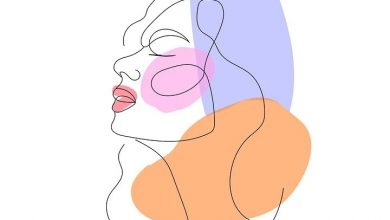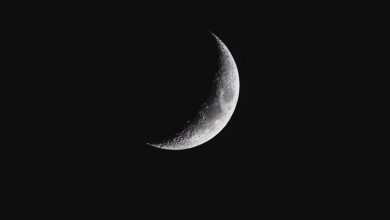Chac Mool by Carlos Fuentes is a short story that explores issues of identity, loneliness, and the conflict between the ancient and modern worlds while blending elements of fantasy, horror, and satire. It was first published in 1954 as part of Fuentes’ collection of stories titled Los días enmascarados (The Masked Days). T
Chac Mool | Summary
The narrator begins by informing that his friend Filbert died by drowning in the Acapulco. The narrator describes his funeral proceedings and later opens his late friend’s briefcase, rummaging through his belongings where he finds a one-way ticket and a notebook among other things. He starts reading the diary despite some reservation in hopes of understanding the unexplained changes in Filbert’s behavior before his passing.
The diary entry opens by describing Filbert’s visit to a lawyer to sort out his pension. As he sits in the old cafe he used to visit frequently in his youth, he reminisces about the time when he and his shared dreams and rejected negative opinions about each other. The diary then introduces Pepe, a friend of Filbert’s who enjoys fabricating stories to further his sales. He was also aware of Filbert’s interest in indigenous art and culture. Recently, he had been on a search for a reasonable replica of the Chac Mool sculpture and Pepe told him about a place in La Lagunilla where one is being sold.
He goes to La Lagunilla one Sunday and discovers the Chac Mool at a junk store. Although Filbert questioned its authenticity, he admired its elegance and nobility. While working on organizing his trophy room, he temporarily kept it in the basement. The home’s plumbing malfunctions one morning, allowing water to overflow and enter the basement. Humidity doesn’t affect the Chac Mool, but Filbert’s luggage is harmed.
At one in the morning, he hears a moan and awakens with suspicion of robbers. Filbert is alarmed by the frequency of such sounds. More flooding results from the plumbing breaking again. Later plumbers arrive to fix the pipes, but moss already begins to grow on the Chac Mool.
Filbert attempts to peel the moss off the Chac Mool sculpture but finds it difficult to do so because it appears to have fused with the stone. He worries that the merchant fooled him because he thinks the sculpture is constructed of plaster and will be damaged by dampness. Despite taking some precautions, he still finds that the Chac Mool has transformed quite a bit, and unsettlingly, the torso and limbs of the sculpture have fleshy textures and hair. His interactions with the Chac Mool start to have an impact on his actions and state of mind. He talks about causing problems with official business at work. He chooses to get medical assistance and expresses his desire to get rid of the sculpture after realizing the Chac Mool may have an effect on his sanity.
The narrator notes that until that point the handwriting in the diary was Filbert’s regular one. However, from August 25th onwards, his handwriting becomes quite childlike and unintelligible, and his entries become less regular.
It sounds like Filbert is talking about how reality is a matter of opinion. His perception of reality is shaken as he recounts the Chac Mool sculpture changing color overnight to become yellow and almost gold, implying a divine presence. He is certain that the sculpture is breathing and that his heart is beating. He then goes on to narrate his meeting with the completely altered Chac Mool, describing how one night as it began to rain, it moved closer to the narrator’s bed.
The narrator shifts to the present to highlight how Filbert was fired from his job in August and there were rumors of him being delirious and even having undertaken theft.
Chac Mool has the capacity to occasionally be amicable and tell great tales. Filbert tells how Chac Mool came to be in his house and how being a creature of nature, he had to live in a cramped, dark place, which had sapped his soul. He describes his irritation and rage at being compared to Aztec gods. He describes Chac Mool growing disruptive behavior and how, one night, after hearing unsettling voices, he observed the sculpture smash furniture and lamps. Chac Mool even allegedly tried to attack him, forcing Filbert to flee for his life. The Chac Mool constant demands for water had soaked up the house. He feels trapped and controlled by the Chac Mool and seems to accept his submissive state. He observes that the Chac Mool takes a nightly excursion and steals animal bones to survive. In order to make sure that Filbert never leaves the house, Chac Mool’s vigilant presence grows. He begins to rely on a public fountain for water as a result of financial troubles that lead to the water and power being turned off.
Filbert notices that the Chac Mool is getting more and more frightened of him and that if it doesn’t rain soon, the Chac Mool will turn back into stone. The Chac Mool eventually exhibits human-like impulses, such as drinking alcohol, fondling pajamas, and asking for a maid. He says that it seems like the Chac Mool is succumbing to human temptations. He wishes to find an opportunity during the Chac Mool’s nightly excursion to escape to Acapulco, seeking a job there and awaiting the Chac Mool’s eventual death in the absence of Filbert’s help.
At that point, Filbert’s diary entry ends. The narrator wishes to avoid thinking about what he had read and seeks to explain it by accrediting it to some sort of psychological or work-related issue. He focuses on the arrangement of his friend’s funeral and reaches his house. Before he can enter, the door is opened by an Indian whose appearance the narrator describes and finds repulsive. He asks the Indian if he’s aware of Filbert’s passing, to which the Indian replies that he is aware of everything, and this doesn’t matter. He asks him to tell the men to shift the body to the house’s basement.
Chac Mool | Analysis
The story is written in the genre of magical realism. According to scholars, Chac-Mool’s presence serves to illustrate Filbert’s fevered imagination’s nightmares, and later it reemerges as a real (flesh and blood) human being within his private and imaginary world, someone who shares past experiences (historias fantásticas) and peaceful moments but who can also be demanding and domineering, a real slave driver who requests ambivalent aquatic and meaty tributes.
It is also crucially noted that the author is exceptionally skilled at managing this narrative device because suspense is a necessary component of all outstanding fiction. He alternates between narratives throughout his story, using narrative counterpoint, which gives the main narrator the responsibility of telling the story. The narration of this story is slowed down by the narrator’s own commentary and also provides additional context by adding details of what he remembers about Filbert’s state during the dates of the diary entry.
The ‘Masked Days’ collection by Carlos Fuented, according to academics, introduces the author’s conception of the fantastic as a destructive force that determines the fate of the characters and encourages readers to interpret the book in a societal context. All stories in the collection, including ‘Chac Mool’, develop a structural relationship with this idea of the fantastic in mind. Each story’s central conflict revolves around a fantastical force that is represented as a pre-Columbian deity, an allegorical character, or a symbolic being. Second, the protagonist in each piece fails to adequately recognize or acknowledge the amazing, which leads to conflict. Finally, the reader is guided to a social lesson by each character’s demise as a result of the consequences of his or her deeds. Each tale has a warning that Latin Americans should be aware of, understand, and be loyal to their culture,
An examination of the story’s power dynamics is necessary to understand the text’s main premise. Pepe’s statement that Filbert is a Christian because he is a product of the Spanish system reveals his link to the Spanish conquerors. His approach to collecting indigenous Mexican art is another example of how he expresses this mentality. As a professing Christian, it is obvious that he does not do so out of worship; rather, it appears to be out of ownership pride. He considers Pepe’s efforts to make comparisons between indigenous religion and Christianity as simple fiction created for commercial gain. Demonstrating his control over these cultural artifacts, he even mentions the necessity to keep the stone statue in his basement until he can rearrange his trophy room.
There is room for the study of the narrator’s and Chac Mool’s connection as a mutually dependent relationship that is deteriorating. Filbert exhibits a range of feelings towards the monument, including intrigue, horror, dread, and rage. He also specifically mentioned Chac Mool’s growing independence and the numerous requests he makes. However, the two’s positions are reversed, which is significant since according to scholars it dramatizes a long-standing historical grudge: An indigenous entity from a pre-Columbian civilization exacts revenge on a representative of the Western colonizing authority that strove to eradicate that culture.
The text is written as a critique of Westernisation and Modernization, which is another important point noted by scholars. The pace of change that has engulfed the world Filbert lives in has left him disillusioned. Chac Mool’s change, however, can also be seen as a critique of capitalism and Western culture on a deeper level. The statue goes through physical changes during its journey from painted stone to living flesh, but it also goes through psychological or even metaphysical transformations. Chac Mool develops a thirst for sensuous pleasures; he ceases to be an immortal divinity and becomes aggressive and demanding; he may be responsible for Filbert’s murder; his appearance when Filbert’s friends first see him at Filbert’s home at the
Chac Mool | Themes
The theme of the clash of cultures is central to the story. It explores the tension between indigenous Mexican beliefs and European influences, particularly Christianity. It is contextualized with the element of the supernatural and a Chac Mool structure that Filbert wishes to acquire.
The fact that Filibert sees himself as a representation of the past, much like the statues he collects, is also evident from his earliest entries. He regrets the changes that the modern world has brought about and even refuses to leave his run-down home. The protagonist is alone in his big, ancient mansion, which serves as a visual representation of the concept of isolation and loneliness. He is more vulnerable and more open to the Chac Mool’s influence because he doesn’t have family, servants, or social life. This theme emphasizes the alienation and disconnections that can be felt in contemporary life.
There is a reversal of power dynamics in the story. Filbert, as an enjoyer and acquirer of Ancient artifacts, wishes to have an authentic sculpture of Chac Mool, a Mesoamerican God in his collection. He is also able to source this for himself, however, as the narrative proceeds, it is the sculptor who starts to control Filbert. Filbert, whether in reality or his delusion, is constantly at the beck and call of the Chac Mool, fulfills all its needs, and is quite afraid of him. He seeks to adhere to all his requests even at a personal cost and believes it is easier to run away and await the sculpture’s natural death instead of engaging in any confrontation.
The final fall of the protagonist is highlighted by the theme of desire and temptation. The negative effects of his desire to possess and dominate the Chac Mool include the loss of personal autonomy and a developing sense of imprisonment. This subject looks at the perils of unbridled desires and the possibility of self-destruction when one gives in to temptation without thinking about the consequences. The influence of ancient artifacts is a connected theme. The Chac Mool statue has magical characteristics that allow it to change from being an inanimate item to a living thing. Its power over the protagonist suggests a supernatural and fantastic element, however, the evaluation of this theme depends on the interpretation of the text; whether it is understood as a paranormal and magical event or a delusional experience as a result of mental illness.
The story’s aim to blur the lines between reality and fantasy, thus fostering a sense of uncertainty and psychological uneasiness, is also an important theme Because of Filbert’s encounters with the Chac Mool, he begins to doubt his own sanity and wonders about the nature of the paranormal events he witnesses. The representation of Chac Mool and Filbert in the story illustrates another crucial aspect, that is, their transformation. The Chac Mool transforms from a stone sculpture to a living thing with the characteristics of a person. This transition reflects the protagonist’s transformation in terms of their thoughts, beliefs, and behavior as he eventually enters the supernatural world.
Chac Mool | Title
The title of the story is the name of a Mesoamerican god who is revered in relation to water, rain, and fertility in the Mayan and Aztec cultures. It is frequently shown as a figure lying down with a bowl on its stomach to hold offerings. The Chac Mool statue emerges as a key figure and serves as a catalyst for the protagonist’s experiences, setting the stage for the supernatural themes that develop throughout the narrative. It captures the story’s rich cultural and mythical setting while hinting at the enigmatic and supernatural developments that take place throughout the narrative.
Chac Mool | Character Sketch
Filbert: Filbert is a middle-aged man who experiences supernatural and magical events following his acquisition of the Chac Mool statue. He is someone who lives in the past and is disappointed by the fast-paced changes brought about by the modern world. He is also a collector of ancient art and artifacts. As the plot develops, Filbert undergoes a transformation from a curious collector to a fearful and submissive individual.
Chac Mool | Literary Devices
The foremost literary device in the story is the use of flashbacks. The text is written as a story within a story. The narrator is reading the protagonist’s diary and mentioning his memories to provide further context. The protagonist is recalling the events that characterized his relationship with the statue of Chac Mool.
The narrator takes occasional breaks from recounting the diary entry to give necessary inputs from the present that enhance the narrative. For example, after narrating Filbert’s growing fear of the sculpture, he pauses the reading of the diary and mentions,
‘I remember that at the end of August, Filbert was dismissed from the Ministry, with a public reprimand from the director, and rumors of madness and even theft.’
In order to allude to the dreadful events to follow, Fuentes also employs foreshadowing. The reader is forewarned of the building tension and strange events to come by writing about Filbert’s observations of the Chac Mool’s changing body, the presence of flesh and hair on his skin, and the statue’s nocturnal actions.
Another important literary device in the text is symbolism. The sculpture of the Chac Mool, and the transformation it undergoes, are representative of varying ideas during the story. Throughout the story the sculpture is not just a literal representation of indigenous culture but also a symbolic representation of the power dynamics between Native and European cultures. In the beginning, Filbert’s attempt at collecting a Chac Mool statue for pleasurable pursuits is to be viewed as an act of cultural hegemony and condescension. Later, as the power dynamics are reversed, the Chac Mool’s power over Filbert is reflective of the supernatural power of indigenous traditions and their ability to overpower Western influences. Towards the end, however, the sculpture also seems to be engaging in human decadence, hinting towards the corrupting effects of Western civilization.
For instance, Filbert’s diary entry notes,
‘There have been other indications that have made me think: he’s almost finished off my wine cellar; he caresses the silk of the nightgowns; he wants me to bring a maid into the house; he’s made me teach him to use soap and lotions. I think that the Chac Mool is falling into human temptations…’
The author also employs vivid and evocative imagery throughout the text to create a rich sensory experience for the reader. Descriptions of the Chac Mool’s appearance, such as its color, descriptions of its belly and ‘menacing’ eyes, paint a vivid picture of the supernatural entity. Additionally, descriptions such as the depiction of the room smelling of things such as ‘incense’ and ‘blood’ add to the atmosphere of unease and terror.



